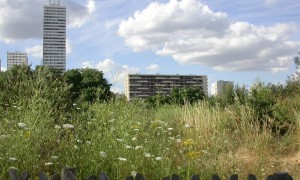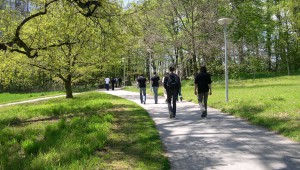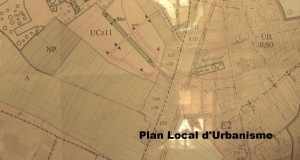Actualités
MANIFESTATIONS - How To Backup Unifi Controller
How To Backup Unifi Controller
A UniFi Controller is a software that manages UniFi Access Points (UAPs) in a network. It allows for central management of the wireless network and its connected devices. UniFi Controller backups ensure that your network is always safe and can be recovered in the event of an unforeseen incident.
There are two main ways to back up a UniFi Controller: manually and automatically.
Manual backups can be done by exporting the controller's configuration files and storing them in a safe place. This can be useful if you need to restore the controller's configuration on a different machine.
Automatic backups are done by the controller itself and can be configured to store backups on a remote server, a USB drive, or even an email address. This is useful if the controller is lost, damaged, or needs to be restored to a previous state.
To configure automatic backups, open the UniFi Controller and click on the Settings icon in the top-right corner. Under the Backup tab, you can configure the following settings:
-Backup Frequency: This setting determines how often the controller will backup its configuration.
-Backup Location: This setting determines where the backups will be stored. You can choose to store them on a remote server, a USB drive, or an email address.
-Backup Retention: This setting determines how many backups will be kept. You can choose to keep the most recent backup, the last 5 backups, or the last 10 backups.
Introduction: What is Unifi Controller?
Unifi Controller is a network management software developed by Ubiquiti Networks. It centrally manages all of the UniFi wireless access points (APs) on a network. UniFi Controller allows administrators to deploy, configure, and manage UniFi APs using a single interface.
UniFi Controller also includes an application called UniFi Protect. UniFi Protect is a video management software that allows you to manage video surveillance for your business. UniFi Protect can be used to monitor your business, protect your employees, and deter theft.
There are a few ways that you can backup your UniFi Controller.
One way to backup your UniFi Controller is to use a tool called CloneDeploy. CloneDeploy is a free and open source tool that allows you to clone your UniFi Controller deployment. CloneDeploy can be used to create backups of your UniFi Controller and to duplicate your UniFi Controller deployments.
Another way to backup your UniFi Controller is to use a tool called Unifi Backup. Unifi Backup is a paid tool that allows you to create backups of your UniFi Controller. Unifi Backup can be used to create backups of your UniFi Controller configuration, your UniFi Controller data, and your UniFi Controller images.
A third way to backup your UniFi Controller is to use a tool called CloudTrax. CloudTrax is a free and open source tool that allows you to manage your UniFi network from the cloud. CloudTrax can be used to create backups of your UniFi Controller and to duplicate your UniFi Controller deployments.
Why is it Important to Backup Unifi Controller?
Unifi Controller is a critical piece of software for managing Unifi Access Points. If it is lost, damaged, or needs to be replaced, all of your Unifi Access Points will need to be reconfigured. A backup of the Unifi Controller is therefore essential.
There are a few different ways to backup the Unifi Controller. The first is to export the configuration file. This can be done by going to Settings -> Backup. The backup file can then be downloaded to your computer.
Another way to backup the Unifi Controller is to create a clone of the controller. This can be done by going to Settings -> Clone Controller. The clone can then be installed on another computer.
It is also possible to backup the Unifi Controller to a USB drive. This can be done by going to Settings -> Backup USB Drive. The USB drive can then be used to restore the controller if it is lost or damaged.
It is important to backup the Unifi Controller regularly in order to protect your network from data loss.
Methods to Backup Unifi Controller
There are multiple ways to backup your UniFi Controller. You can backup your controller manually, or use a backup tool such as Unifi Backup.
UniFi Controller is a software that manages UniFi devices. It stores all the information about your UniFi network in a database. If your controller is lost, damaged, or stolen, you can restore the database from a backup to rebuild your network.
To backup your UniFi Controller manually, you can export the database to a file.
1. Log in to your UniFi Controller.
2. Click on the Settings tab.
3. Click on the Export tab.
4. Click on the Export Database button.
5. Enter a filename and click the Save button.
The exported file contains all the information about your UniFi network, including the devices, users, passwords, and settings.
If you need to restore the UniFi Controller from a backup, you can import the database file.
1. Log in to your UniFi Controller.
2. Click on the Settings tab.
3. Click on the Import tab.
4. Click on the Choose File button.
5. Select the exported file and click the Open button.
6. Click the Import button.
The UniFi Controller will restore the database from the file and rebuild your network.
Using Unifi Controller's Backup Feature
Backing up your UniFi Controller is an important security measure to protect your UniFi network. UniFi provides a built-in backup feature to make backing up your controller easy.
To back up your UniFi Controller using the built-in backup feature:
1. Log in to the UniFi Controller.
2. Click on Settings in the bottom left-hand corner of the Controller.
3. Click on Backup in the left-hand menu.
4. Click on the Backup Now button.
5. The backup will begin automatically.
When the backup is complete, you will see a message indicating the backup was successful. You can then click on the View Backups button to view the backup files.
Manually Exporting and Importing Unifi Controller Data
Backing up your UniFi Controller is an important step in ensuring your network’s uptime. If something happens to your UniFi Controller, you will be able to restore your network using your backup.
There are two ways to back up your UniFi Controller: exporting and importing data.
Exporting your UniFi Controller data will back up all of your Controller’s settings, devices, and users. Importing your UniFi Controller data will restore all of your Controller’s settings, devices, and users.
To export your UniFi Controller data, follow these steps:
1. Log in to your UniFi Controller.
2. Click on Settings in the Controller’s sidebar.
3. Click on Export configuration in the Settings menu.
4. Choose a location to save your backup file, and click Save.
Your UniFi Controller data is now exported.
To import your UniFi Controller data, follow these steps:
1. Log in to your UniFi Controller.
2. Click on Settings in the Controller’s sidebar.
3. Click on Import configuration in the Settings menu.
4. Navigate to the backup file you exported, and click Open.
Your UniFi Controller data is now imported.
Storing Unifi Controller Backup Files
Backing up your UniFi Controller is a necessary step to safeguarding your network. In the event that your controller is lost, damaged, or needs to be reinstalled, having a backup will save you time and hassle.
There are a few ways to back up your UniFi Controller. You can save a copy of the controller’s files to a USB drive, external hard drive, or network location. You can also use the UniFiCloud backup service to store a copy of your controller’s files in the cloud.
To save a copy of the controller’s files to a USB drive, external hard drive, or network location:
1. Log in to the UniFi Controller.
2. Click on Settings in the menu bar.
3. Click on Backup & Restore.
4. Click on the Backup button.
5. Select the backup location.
6. Click on the Save button.
To use the UniFiCloud backup service:
1. Log in to the UniFi Controller.
2. Click on Settings in the menu bar.
3. Click on Backup & Restore.
4. Click on the Backup button.
5. Click on the UniFiCloud tab.
6. Click on the Enable button.
7. Select the backup location.
8. Click on the Save button.
9. Click on the Activate button.
The UniFiCloud backup service will store a copy of your controller’s files in the cloud. This service is free for up to 2GB of storage.
Testing the Backup and Restoring Process.
UniFi Controller is a software that manages and monitors UniFi access points (APs) and the UniFi Wired and Wireless Network Switches. UniFi Controller also allows you to manage guest access and create schedules for automatic AP and switch management.
To back up the UniFi Controller, you will need to first create a backup file. Log in to the UniFi Controller and go to Settings > Backup. Under the Backup File heading, click the Create Backup button.
The backup file will be created and will include all the settings and data for your UniFi Controller. The backup file will be in the .unf format.
To restore a backup file, log in to the UniFi Controller and go to Settings > Backup. Under the Restore Backup File heading, click the Restore button.
Locate the backup file you want to restore and click the Restore button. The backup file will be restored and all the settings and data for your UniFi Controller will be restored.
DIVERS - Politiques urbaines et biodiversité
NatureParif publie "Politiques urbaines & biodiversité, recueil d'actions de villes et agglomérations Françaises et Européennes" .
Cet ouvrage a été réalisé suite à une rencontre organisée par l'Agence et la Mairie de Paris le 24 Janvier 2012. C'est à la fois un recueil des politiques publiques et un argumentaire à destination des élus en faveur de la biodiversité. Des thématiques très diverses sont abordées : lutte contre l'étalement urbain et les pollutions (lumineuse, sonore, chimique...), biodiversité dans l'urbanisme et la construction, circuits courts, TVB (Trame Verte et Bleue)...
Réalisé avec de nombreux partenaires (Ville de Paris, associations d'élus, collectivités, fonctionnaires territoriaux) et dans le cadre de la CDB (Convention sur la Diversité Biologique), il contribuera au Plan d'actions des autorités locales sur la biodiversité (Nagoya 2010) dont les résultats seront présentés en Octobre 2012 en Inde à l'occasion de la Convention des Parties de la CDB.
Le recueil est téléchargeable sur le site de Natureparif.

MANIFESTATIONS - Capitale de la biodiversité 2012 : des ateliers dans votre ville
Dans le cadre du concours "Capitale de la biodiversité 2012", NatureParif et ses partenaires organisent des journées de rencontre et d'information sur la préservation de la biodiversité en ville. A destination principalement des élus et des agents des collectivités, ces ateliers ont trois objectifs :
- Favoriser l'émergence de collaboration entre structures locales,
- Mettre en valeur des expériences et bonnes pratiques,
- Présenter le concours "Capitale Française de la biodiversité" pour son édition 2012 qui s'adresse à toutes les villes et intercommunalités.
Ces ateliers se déclinent à Paris, Grenoble, Nantes, Bordeaux et Lille.
Retrouvez le programme de ces journées sur le site de NatureParif http://www.natureparif.fr/fr/concours2012/ateliers.

DIVERS - Perspectives de l'OCDE à horizon 2050 : la biodiversité parmi les priorités
L'OCDE a publié ses perspectives à horizon 2050 et place le ralentissement des pertes de biodiversité parmi les 4 principaux enjeux politiques.
Le développement et la prospérité sans précédent de l'humanité depuis près d'un demi siècle a causé l'épuisement des ressources naturelles et la pollution des écosystèmes qui pourrait à terme compromettre l'avenir de l'humanité.
"Que réservent les 4 décennies à venir ?" C'est la question que posent les Perspectives de l'environnement de l'OCDE à horizon 2050. Dans l'hypothèse de non déploiement de politiques vertes plus ambitieuses, cette étude, menée conjointement par l'OCDE et l'Agence d'évaluation environnementale des Pays-bas modélise les conséquences de l'inaction et donc les répercussions des tendances économiques et démographiques sur l'environnement. Les politiques capables d'améliorer ces perspectives sont mises en évidence et abordent quatre domaines prioritaires: le changement climatique, la biodiversité, l'eau et les effets de la pollution sur la santé.
Consulter le site de l'OCDE pour accéder au rapport.
Crédit photo : Devigne

RÉGLEMENTATIONS - Trame verte et bleue et documents d'urbanisme : un nouveau décret
Mise en conformité des documents d'urbanisme avec les dispositions de la loi Grenelle 2 du 12 juillet 2010 : un nouveau décret entré en vigueur le 3 Mars 2012 !
Le décret concerne un public très large : les collectivités territoriales, les professionnels de la construction et de l'immobilier ainsi que les particuliers. Il modifie les dispositions règlementaires du code de l'urbanisme relatives aux schémas de cohérence territoriaux (SCOT) et aux plans locaux d'urbanisme (PLU) pour répondre aux engagements nationaux en faveur de l'environnement -et donc de la biodiversité- notamment pour :
- la manière dont les PLU prennent en compte les trames vertes et bleues ;
- l'intégration de dispositions tenant lieu de programme local de l'habitat et de dispositions tenant lieu de plan de déplacements urbains dans les PLU intercommunaux ;
- les conditions de classement des terrains en zone naturelle et forestière et en zone agricole afin de tenir compte des dispositions de l'article 51 de la loi du 27 juillet 2010 de modernisation de l'agriculture et de la pêche.
Enfin, le décret majore d'un mois le délai d'instruction des autorisations de construire soumises à la consultation de la commission départementale de la consommation des espaces agricoles.
Source : legifrance.gouv.fr


 Imprimer
Imprimer Ajouter à mes favoris
Ajouter à mes favoris

